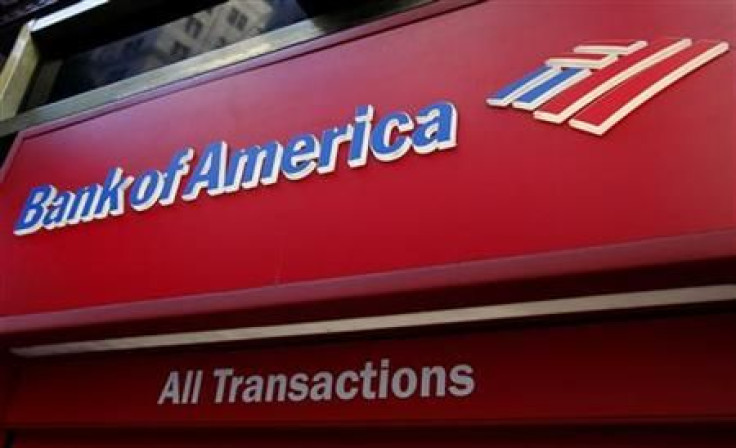Even Warren Buffett Can’t Stop Bank of America’s Stock From Plunging

So far, it has been a tough week for the troubled Bank of America Corp. (BAC). The company's stock hit a new 52-week low Tuesday, dropping more than 3 percent to $5.03 a share, the lowest level since March 12, 2009.
After the market closed, more bad news came as Standard & Poor's downgraded the bank's long-term credit rating by a notch to A- from A. And let's not forget the bad press from Bloomberg's Monday exposé revealing that the bank profited an estimated $1.5 billion from secret Federal Reserve loans.
Three years after a massive bailout, Bank of America is still struggling under mounting issues related to its mortgage business. As part of a broader restructuring, the bank in mid-August announced an elimination of 3,500 jobs across the nation. Its shares dropped on the news.
Later in the month, Berkshire Hathaway came to the rescue and announced a plan to invest $5 billion in Bank of America, which was seen as a vote of confidence for the beleaguered firm. Yet, Buffett's generosity only provided a temporary relief to the market.
After Buffett's injection, the bank's shares managed to climb for another four days on the news that Bank of America planned to sell half of its 10 percent stake in China Construction Bank Corp., a transaction expected to generate $8.3 billion in cash proceeds.
In the past two years, Bank of America has raced to offload the legacy Merrill Lynch assets to meet upcoming capital requirements and strengthen its capital ratios, per what is known as Basel rules.
Basel III is an agreement defined in the wake of the 2008 financial crisis to effectively triple the size of the capital reserves that the world's banks must hold against losses. This was one of the most important reforms to emerge from the financial crisis and the rules will be phased in from January 2013 through to January 2019.
For Bank of America, this meant selling its stakes in companies including BlackRock Inc. (BLK) and Pizza Hut franchisee NPC International Inc.
Bank of America also plans to dump its remaining shares of China Construction Bank, which would generate another $2.9 billion and boost the core measure of its financial strength. The market reacted to the news and a new round of sell-off started the very next day.
However, just last week, the bank's board was warned that the company could face a public enforcement action if regulators aren't satisfied with what the bank has done to strengthen itself.
Ironically, we almost forget that Bank of America is a blue chip company and one of the only two banks among the 30 blue chip stocks the Dow Jones Industrial Average follows. The other one is JP Morgan Chase & Co. (JP), which is also down for the day when the benchmark index gained 0.56 percent.
Also worth noting is that Bank of America had previously set an ex-dividend date for Wednesday, Nov. 30, where owners of shares as of market close the day before will be eligible for a dividend of one cent per share.
However, while investors should have been actively buying the company's shares from the date of announcement through to close-of-market Tuesday -- before the share price is expected to drop Wednesday by the amount of the expected dividend of one cent -- that certainly did not happen.
At this rate, it may well be a gloomy Wednesday tomorrow for Bank of America, whose shares are already on the verge of breaching $5 in Tuesday's after-hours trading.
© Copyright IBTimes 2024. All rights reserved.












